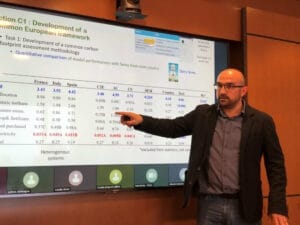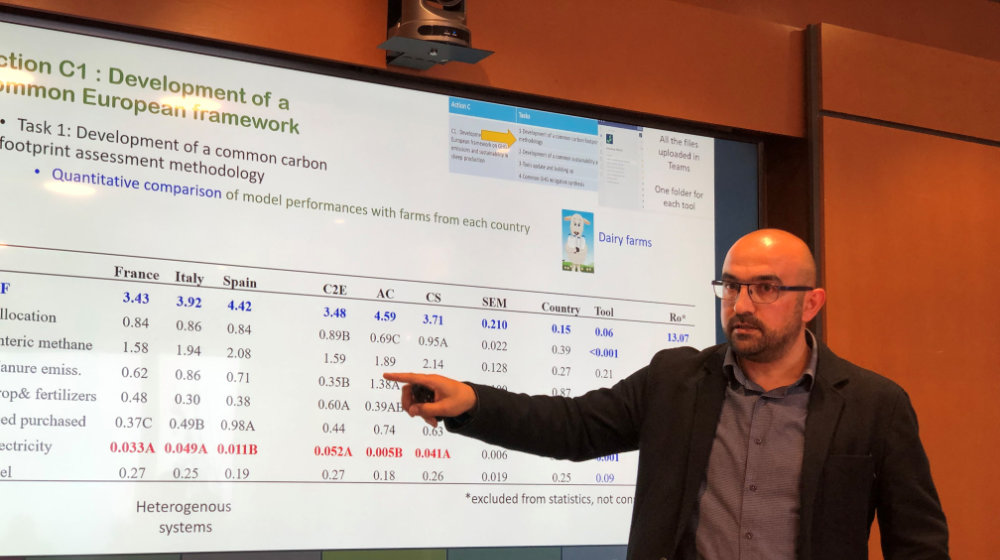 Alberto Stanislao Atzori is an associate professor of animal nutrition at the Department of Agricultural Sciences of the University of Sassari and is part of the Italian team for the LIFE GreenSheep project.
Alberto Stanislao Atzori is an associate professor of animal nutrition at the Department of Agricultural Sciences of the University of Sassari and is part of the Italian team for the LIFE GreenSheep project.
Alberto has a strong established experience in the environmental impact assessment of farming systems and, as representative of the “Agriculture and Food Special Interest Group” of the System Dynamics Society, he has a strong interest in the building of a mathematical modelling approach to aid in better understating and decision making when facing complex system.
“..I have decided to join “GreenSheep” because I believe that a territorial and European vision to address the environmental impact of sheep farms is necessary, particularly to keep contact among the countries in which sheep farming. Is highly relevant. In this regard, Italy and in particular, the Sardinia region certainly represents an important reality at the European level.
Moreover, the opportunity of a project of this kind is to interact with European institutions to align the point of view and have a common perspective on the quantification of emissions, on the identification of good practices to be adopted at the farm level to address emission mitigation and to define common environmental policies. In this regard, the previous life projects in which I participated (SheepToShip and ForageForClimate) have contributed significantly to gaining experience that will be beneficial for the next steps within the “GreenSheep” project…”
During the 73rd meeting of the European Federation of Animal Science (EAAP) held in Porto from the 5th to the 9th of September 2022, he presented the results of the comparison between the tools to assess the carbon footprint that are used in the GreenSheep project (Cap2ER, ArdiCarbon, CarbonSheep, SheepLCA).
“The objective of this comparison is to maintain the peculiarities of the tools already available in Europe and used at the farm level and harmonising them in order to make them able to carry out comparable environmental impact assessments for milk and meat farms. This will open the door for a discussion at the European level with aligned values of emission quantification even without building a common European tool that could result limited in terms of flexibility and adaptability across countries and farming systems.”
He emphasized the differences found between the various tools and anticipated the next steps of the project toward a better harmonization of the approach at a European level in front of an audience of interested experts.
“..The comparison showed us that the tools performed very similar estimates of farm emissions. Especially for on-farm produced and purchased feeds and energy. Some differences, among tools, were related to the calculation of emissions from manure management and enteric methane due to the approach each tool uses in their estimation.
The next step, currently underway, will be to harmonise the approaches and emission coefficients to reach more comparable estimates maintaining the flexibility of each tool with regard to adaptation to the national or regional farming systems and productions. Subsequently, after this building-up phase, the tools will be used to evaluate the performance of the demonstrative farms, from the different countries involved in the project, in which good practices for emission mitigation will be promoted in the next 3 years..”

